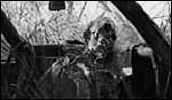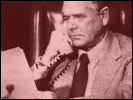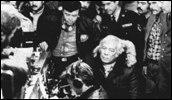Virus
- Year
- 1980
- Original title
- Fukkatsu no Hi
- Japanese title
- 復活の日
- Director
- Cast
- Running time
- 106 minutes
- Published
- 9 April 2001



by Jasper Sharp
Doom and gloom abounded in US cinema throughout the 1970s as the first waves of pre-millennial tension manifested themselves in a string of extravagant displays of destruction. From straightforward disaster spectacles such as Hurricane (1974 - Jan Troell) and Earthquake (1974 - Mark Robson) to the apocalyptist social commentary of George Romero's Dawn of the Dead (1978), audiences around the world seemed quite happy to shell out their bucks for lavish affirmations of mankind's vulnerability.
Meanwhile, in Japan, megalomaniacal producer Haruki Kadokawa had expanded his father's publishing empire to form the Kadokawa Production Company. He shrewdly noted the interminable decline of the European and Japanese film industries as they became ever more cowed into submission beneath the big-budget bombast of the Hollywood blockbuster. He set out to revolutionize the ailing indigenous industry with a string of unashamedly populist and cannily publicised seat-fillers, often based on literary properties held by Kadokawa's publishing arm. The veteran director Kon Ichikawa was roped in to helm his first production, The Inugamis (Inugamike no Ichizoku) which clocked in at number two in the national box office charts in 1976.
But it was in 1977 that Kadokawa first cast his net Westwards setting the inter-racial murder mystery Proof of the Man (Ningen no Shomei, directed by Junya Sato) in the United States and casting George Kennedy from the successful Airport series of films as the lead. With an eye firmly on the export market, two versions were prepared, with the Japanese or American oriented scenes either pruned or added depending on which side of the Pacific the film was to be released.
In actuality Proof of the Man never received a theatrical release Stateside, though the English-language print later did surface on video. Still, the domestic box-office receipts augured well, and this same approach was repeated a couple of years later when 2 million yen was poured into a more commercially pitched cross-cultural epic. Directorial duties were handed over to Kinji Fukasaku, whose popular Battles Without Honour and Humanity (Jingi naki Tatakai, 1973-75) series had made him one of the few established directors to weather it through the harsh cinematic climate of the decade, and who already had some experience in international co-productions due to his involvement with Richard Fleischer for Tora! Tora! Tora! in 1970. The resulting film, Virus, clocked in as the most expensive in Japanese history.
As with the previous year's Meteor (dir: Ronald Neame), Virus capitalises upon the conjecture that the one thing that unites the world is our mutual fear of imminent annihilation. The perception that Cold War fever was reaching epidemic proportions is here rendered explicit in the form of the genetically engineered superbug MM-88, which when unleashed from its laboratory in Leipzig, East Germany takes little time in laying waste to the world's population. The handful of survivors are holed up in a number of research stations on Antarctica where this communist contagion is unable to penetrate due to the severe climate. With only 8 women nestling amongst the 858 stationed there it is clear that the ramifications on what remains of human society are going to be pretty severe. And if that wasn't enough, a series of earth tremors in the Washington area look set to fire off the US nuclear arsenal towards the USSR, triggering off an automatic counter attack rendering Doomsday imminent within the next fortnight. Well, at least it's not raining.
Japan has traditionally been fairly reticent when it comes to its presence on the global entertainment arena, but Virus's running time alone heralds its epic intentions. Still, with only a few token Japanese faces clamouring for screen time amongst its role call of familiar American stalwarts of the day, you'd be hard pushed to pinpoint country of origin of this film. Blink and you'll miss Sonny Chiba and Ken Ogata's almost subliminal appearances in the US release, two actors who should be fairly familiar to Western audiences - Chiba from the Streetfighter series (kicking off with Streetfighter / Gekitotsu! Satsujin Ken directed by Shigehiro Ozawa in 1974); Ogata from his subsequent appearances in the title role of Paul Schrader's Mishima: A Life in Four Chapters (1985), and Peter Greenaway's The Pillow Book (1996). The roles of the Japanese characters are more fully developed in the 156-minute print which circulated around Japan, and what impact this missing footage would have had on the final film is intriguing. In its truncated version Virus comes across as more than a little unfocused.
Based on the original novel Fukkatsu no Hi by Sakyo Komatsu (who had also penned the source material for the earlier Japanese disaster epic Tidal Wave / Nippon Chinbotsu, 1973), Virus suffers from an over-ambitious narrative that perhaps tries to cram in far too many disparate threads into its running time. There are simply too many characters for the film to keep track of effectively, and no one single audience identification figure so that the large segments of characterisation missing from the US release print result in constant lurches in pacing and rhythm.
With the initial half hour devoted to portraying the devastating effects of the virus sweeping across the globe from the steppes of Siberia to the carpeted interiors of the White House by way of Paris, Rome, Tokyo, and London, by the time we are introduced to our Antarctic survivors we're already aware that any future that they might have is a pretty futile one. The mid-section sketches over the relationships and tensions which erupt between the various international factions holed up in their sterile rat hole in a way which is stereotypical and often endearingly naïve.
Overseen by the patriarchal voice of authority represented by disaster movie veteran George Kennedy, the Russian characters are all bowed heads and apologies, the Japanese beaver away at their seismographic charts, the Chileans throw chairs around, Olivia Hussey plays Norwegian babymomma, one of the handful of women on whom the future of humanity depends, whilst the sole British character maintains a stiff-upper-lipped air of aloof yet efficient authority. It is up to the wholesome forces of Uncle Sam manifested in the form of the towheaded Chuck Connors to leap on the next submarine up to Washington to save the world, but he does at least allow Masao Kusakari to tag along.
Virus faired disappointingly when it was released upon an American public that had by this stage already reached complete saturation point as far as the disaster epic was concerned. Yet despite its meandering plot and lengthy running time, it still has a lot to offer. The impressive snowscapes of Alaska and Canada which double as the Antarctic exteriors are beautifully shot, and Fukasaku brings an air of professionalism to the entire project which falls well in line with the requirements of the genre - though I'm intrigued as to how he handled the predominantly American cast, as he seemed to speak little English when Midnight Eye met up with him during the 2001 Rotterdam International Film Festival.
There are some nice performances all round, and the internal dramas which erupt between the various cast members make for some compellingly solid, if somewhat artificial drama. It's a highly watchable piece of early-80s excess, silly perhaps, but undeniably fun, and definitely one to catch on a big screen if you get a chance.
The end result certainly did no harm to the careers of either director or producer. The Kadokawa company put up the money for Fukasaku's next couple of epics, Samurai Reincarnation (Makai Tensho, 1981) and Fall Guy (Kamata Koshin-Kyoku, 1981), and, paralleling the 'big is better' approach of Hollywood's Jerry Bruckheimer, went on to produce a run of glossy high-concept actioners such as Black Magic Wars (Iga Ninpo-cho, 1983 - Mitsumasa Saito). He later turned to direction himself, with the Spielbergian schmaltz and spectacle of Heaven and Earth (Ten to Chi to, 1990) and Rex: A Dinosaur Story (Rex: Kyoryu Monogatari, 1993), before the excess of his own life caught up with him and he was arrested for cocaine smuggling in 1993 in a very high-profile scandal.
Imprisoned in 1996 for a period of four years, he did manage to squeeze in a remake of his 1983 cutesy sci-fi The Little Girl Who Conquered Time (Toki o Kakeru Shojo) before they slammed the door on him. For better or for worse, his absence has left a large space within the Japanese entertainment industry.